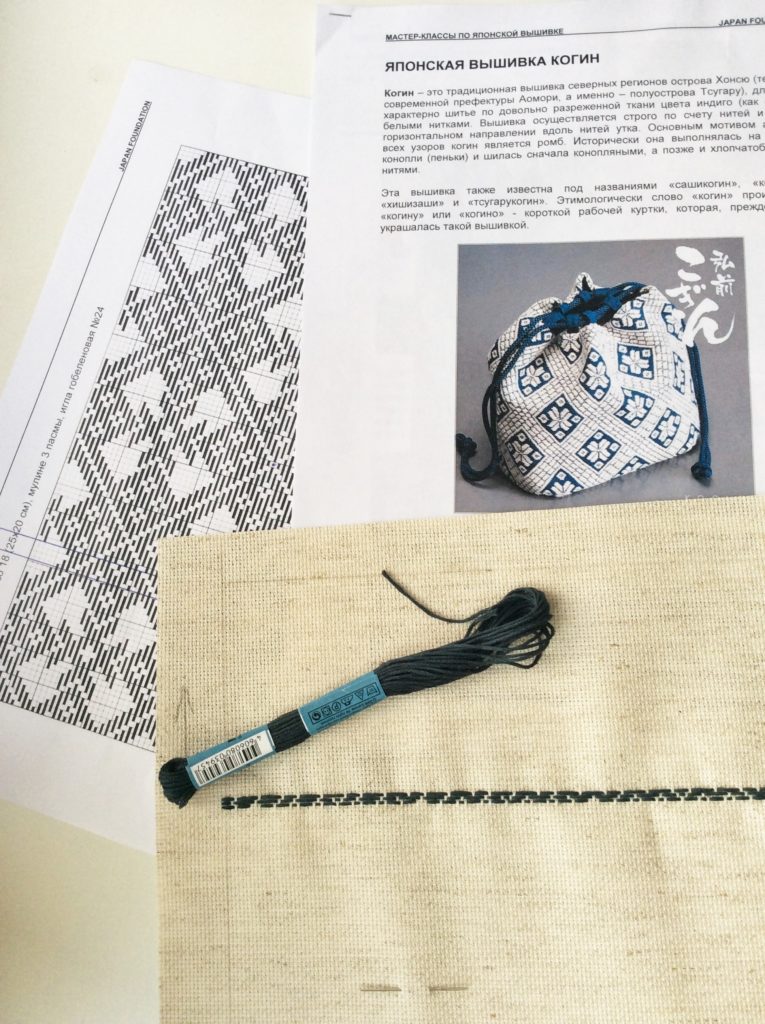
Although my main love is still micro macramé, I am interested in other handicrafts. Especially Japanese as me appeals their fine and delicate attitude to what they do.
“Kogin” embroidery is traditional for Japanese northern farmlands. Its history goes back to Edo time (1603-1867). Strict rules forbade peasants to wear fine cotton clothes and decorate it with attractive patterns. Thus, the peasant saw their clothes from homemade hemp cloth. The cloth was threadbare. “Kogin” embroidery was meant primarily to cover holes and make the cloth thicker, denser and last of all beautiful. Traditionally the cloth was colored indigo and the embroidery was made with white hemp thread.
As time went by the beauty of the embroidery became more and more important and now it decorates smaller souvenir items such as bookmarks or brooches. Traditional white with indigo patterns although still popular but share its place with more colorful designs. As I am fond of beautiful but handy items, I got many ideas and someday I hope to have time to realize them.